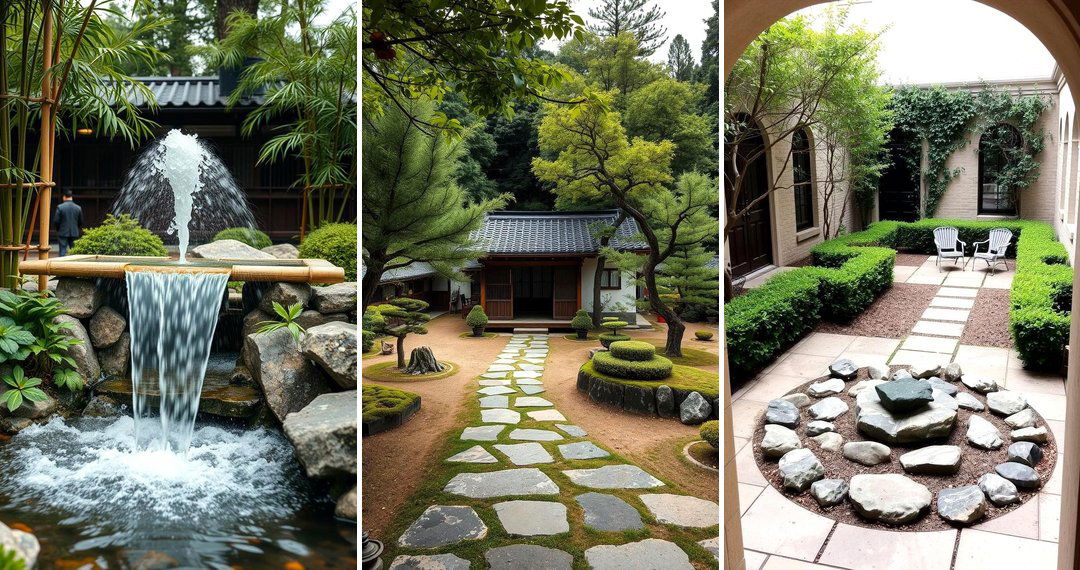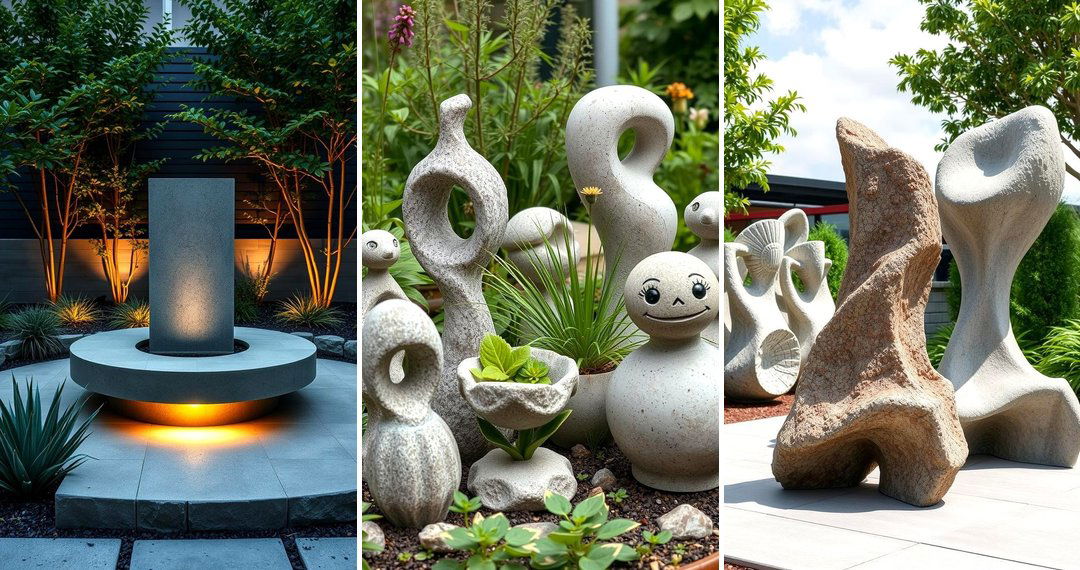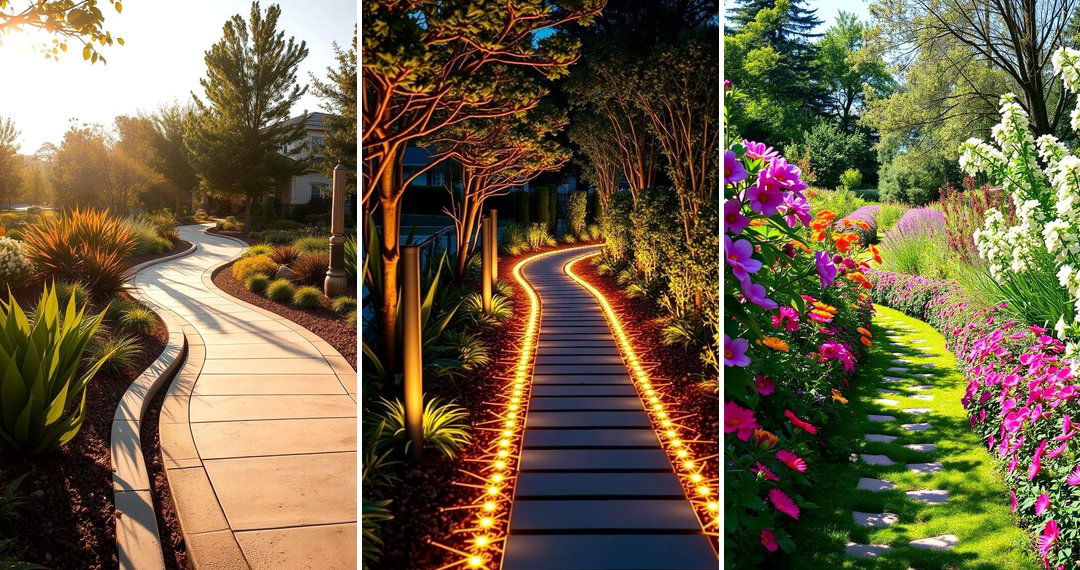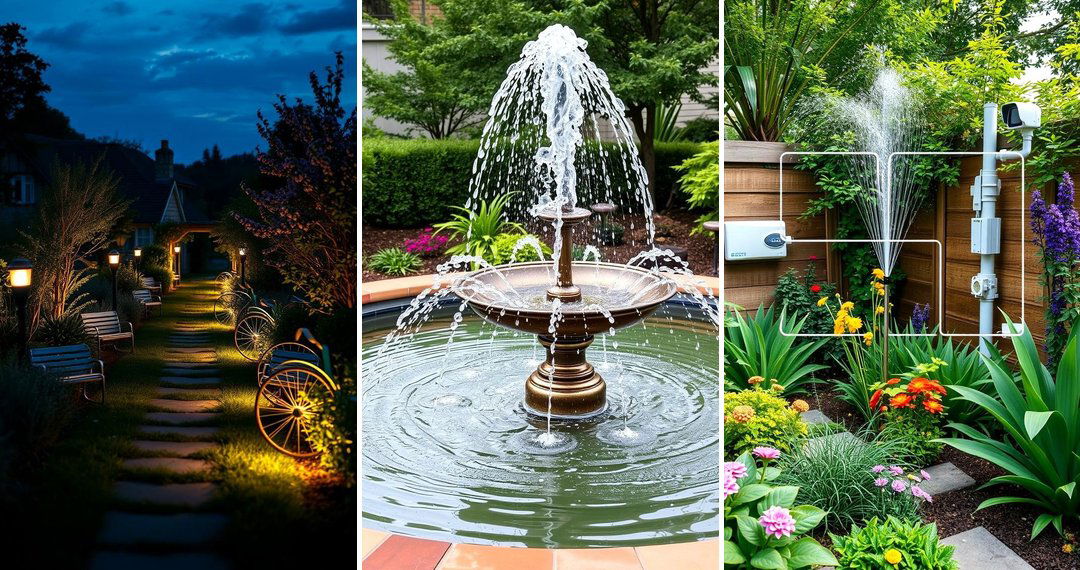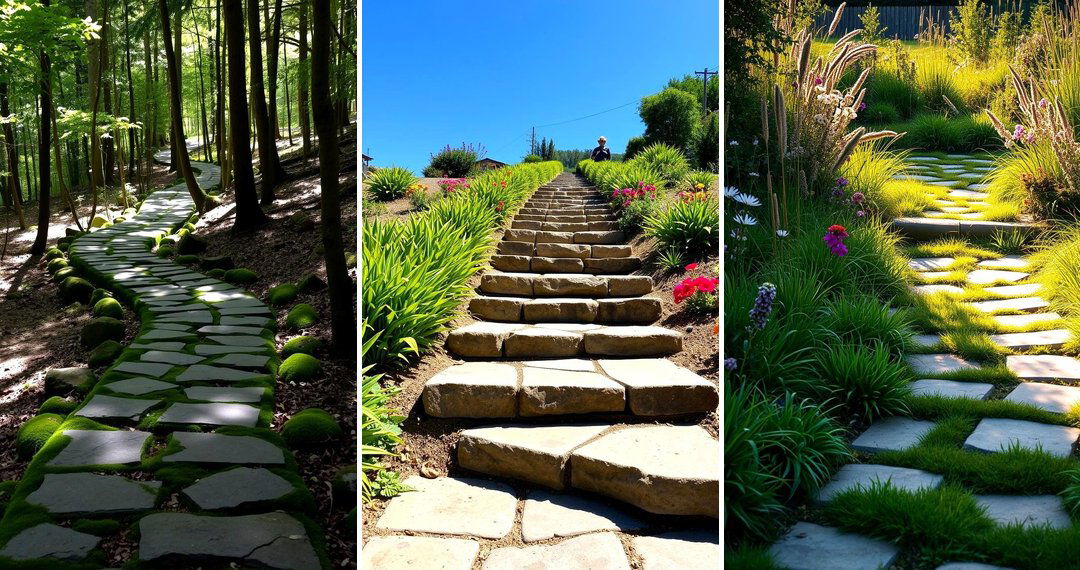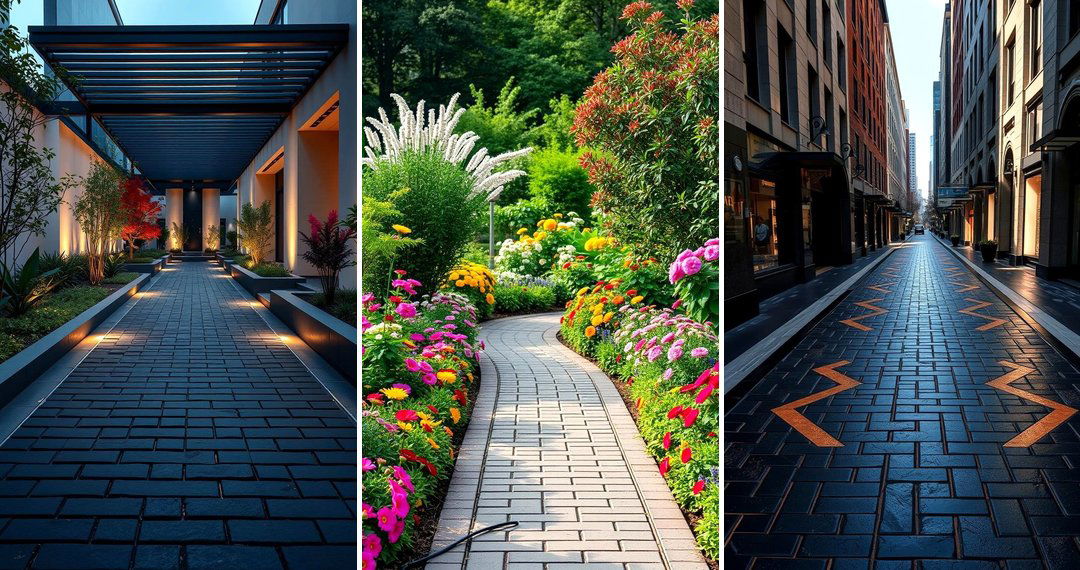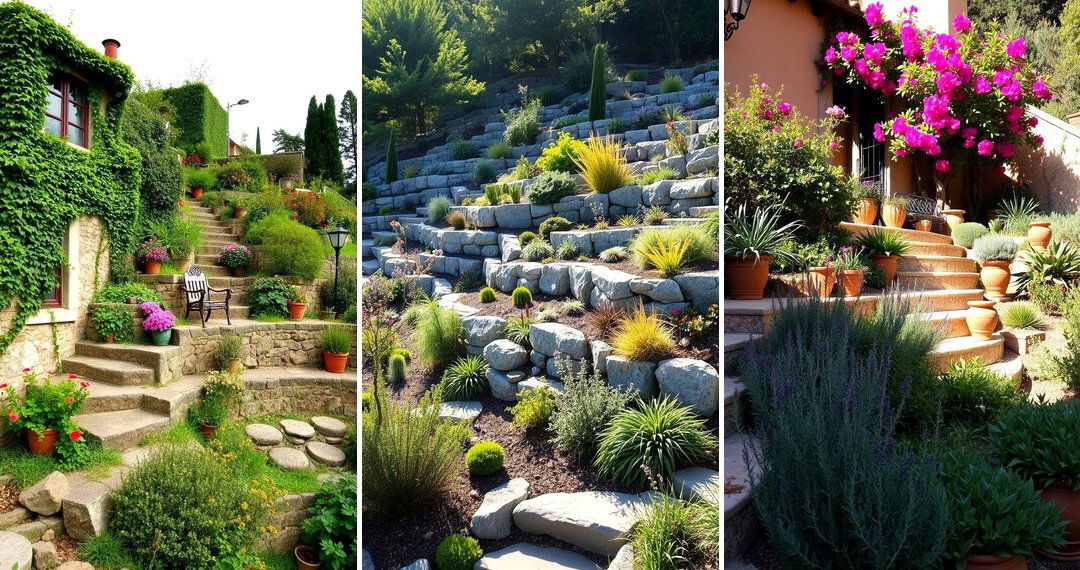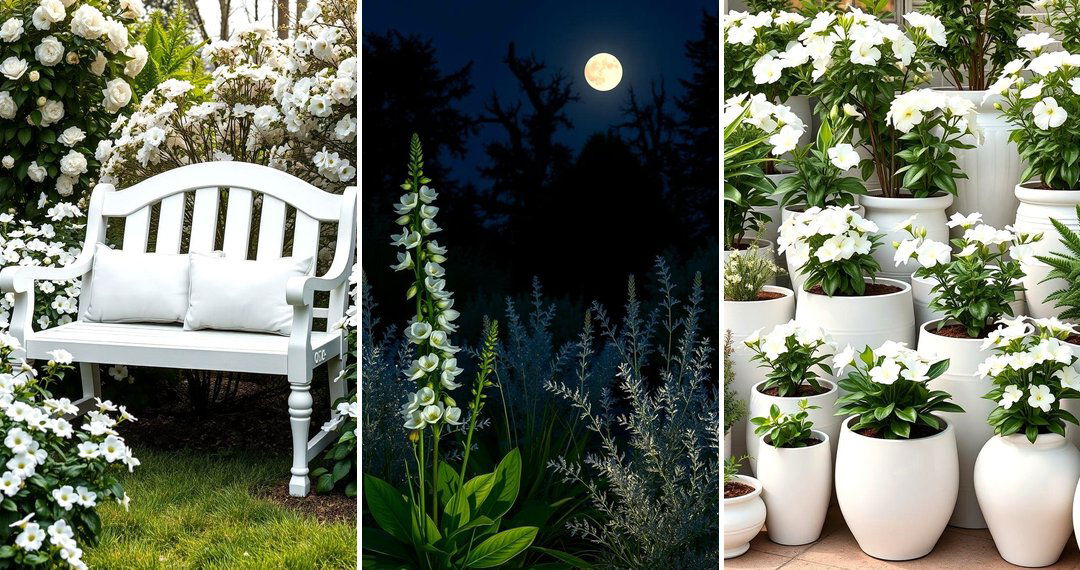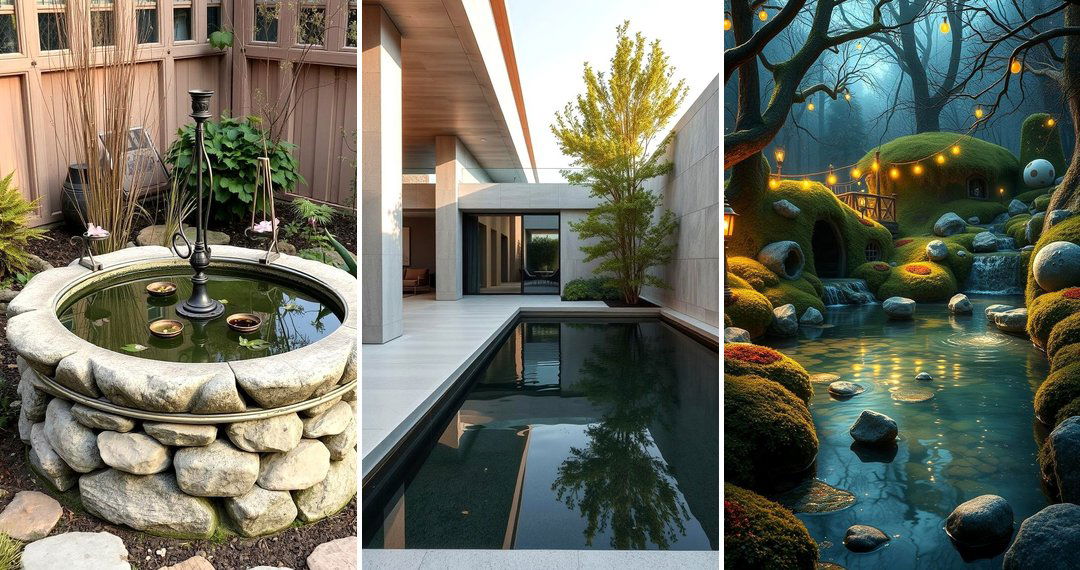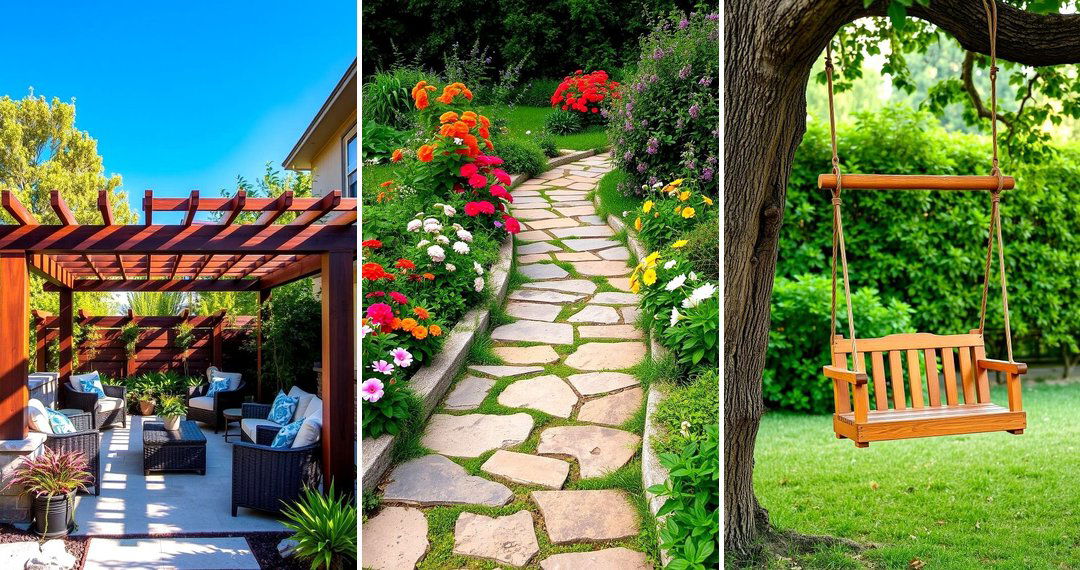Embark on a journey of tranquility and mindful creation as we explore the captivating world of Zen gardens. These serene spaces, born from Japanese tradition, offer more than just visual appeal; they provide a sanctuary for contemplation and a connection to nature's subtle beauty. Whether you have a sprawling backyard or a cozy balcony, the essence of a Zen garden lies in its simplicity and the intention behind its design. Let's delve into a collection of inspiring ideas to help you cultivate your own personal haven of peace, transforming any area into a source of calm and reflection.
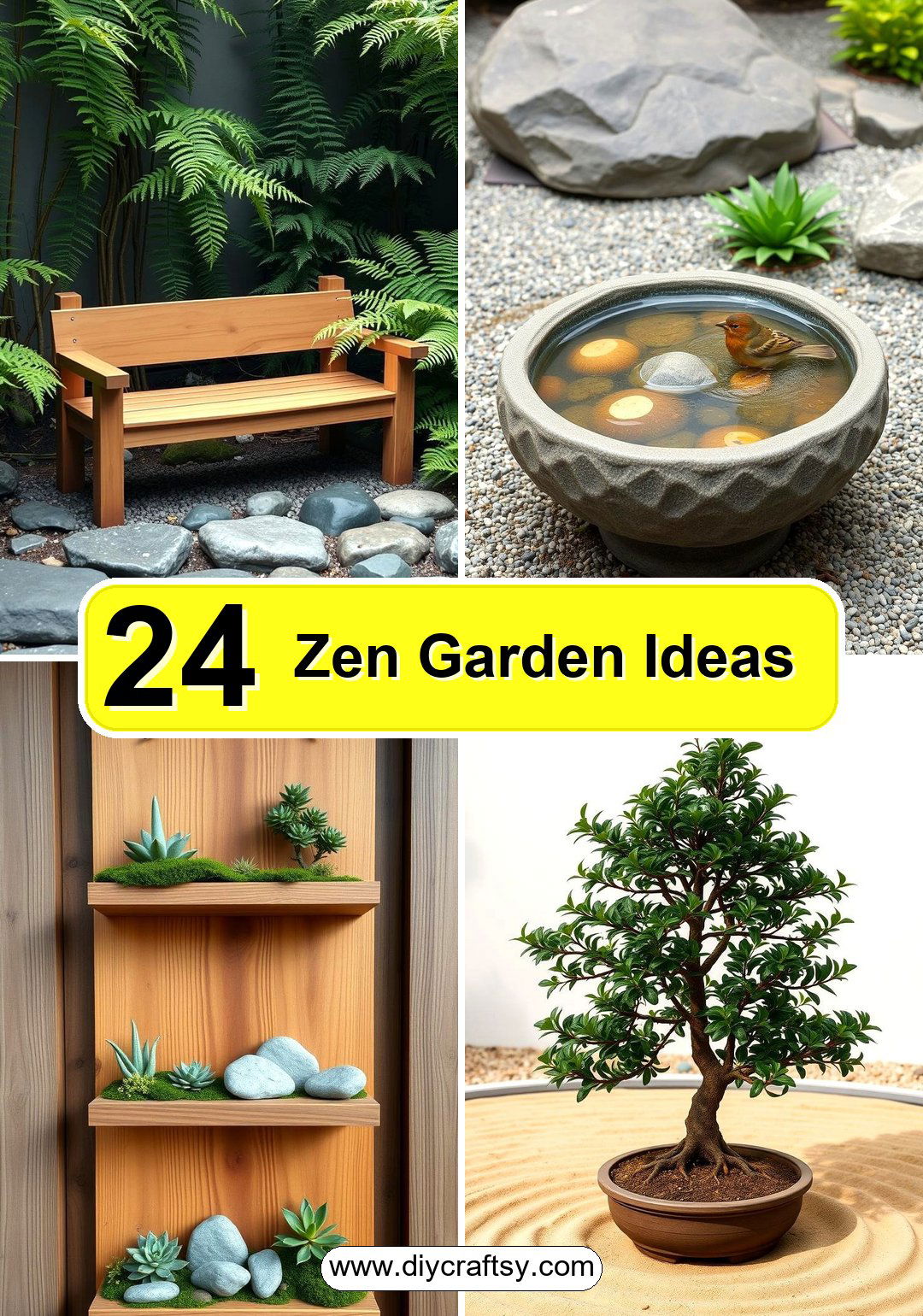
1. Classic Raked Sand Garden

Consider the timeless elegance of a classic raked sand garden. This iconic design features meticulously raked patterns in fine gravel or sand, representing the ripples of water or the vastness of the ocean. The act of raking itself becomes a meditative practice, promoting focus and tranquility. Incorporating strategically placed rocks can symbolize mountains or islands, adding depth and visual interest to the minimalist landscape. The key benefit lies in its ability to evoke a sense of serenity and offer a tangible outlet for mindful engagement.
2. Moss Garden Sanctuary
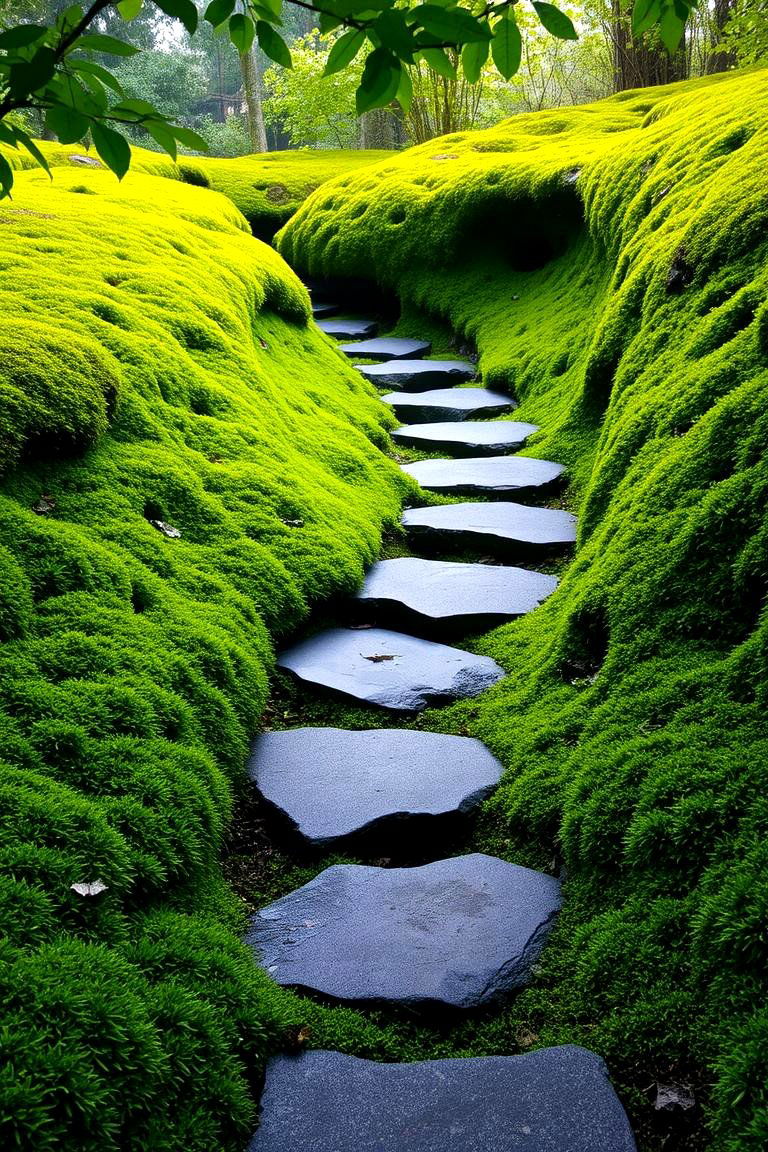
Take a step into a lush, verdant world with a moss garden sanctuary. This idea focuses on the beauty and texture of various types of moss, creating a soft, carpet-like landscape. The gentle hues of green provide a calming visual backdrop, fostering a sense of peace and tranquility. Incorporate stepping stones or small pathways to encourage gentle exploration and appreciation of the intricate details of the moss. This type of garden thrives in shaded, moist environments, offering a unique and low-maintenance approach to Zen gardening.
3. Rock Garden with Water Feature
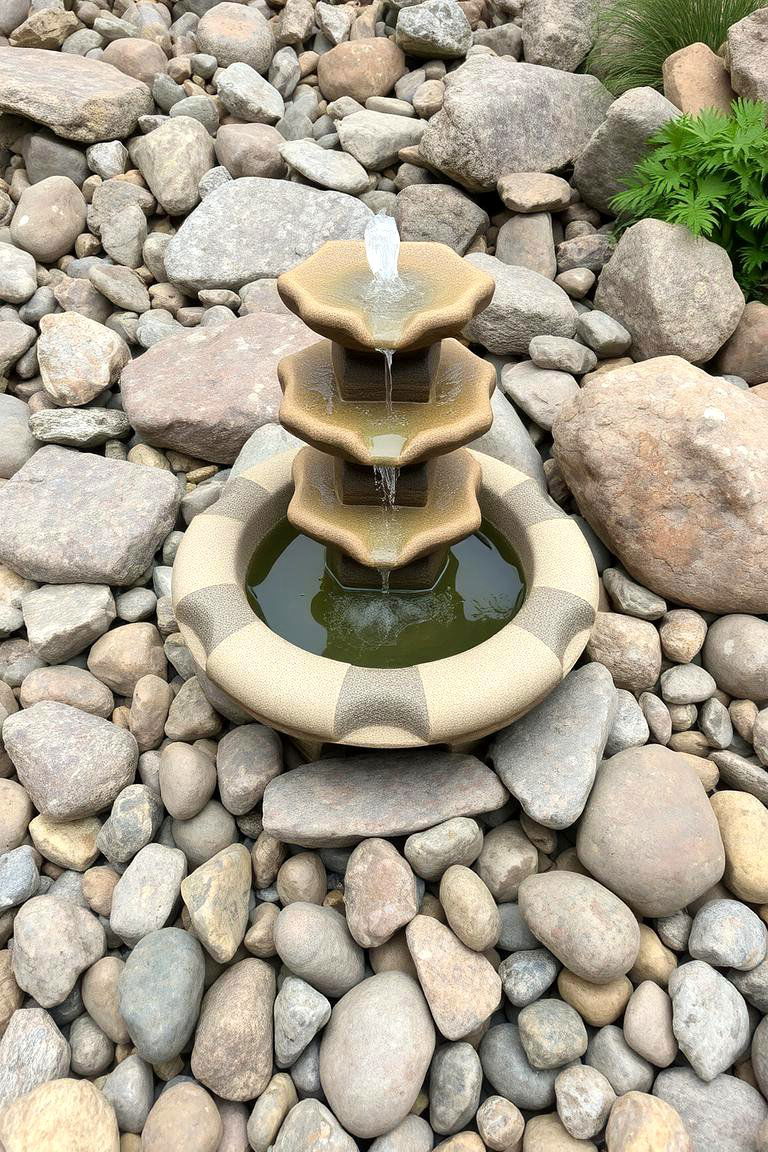
With the soothing sounds of flowing water, a rock garden with a water feature can elevate your Zen experience. The combination of natural stones, carefully arranged to suggest mountains or landscapes, with the gentle murmur of a small fountain or pond creates a multisensory experience. The water element introduces movement and life, contrasting with the stillness of the rocks. This design promotes relaxation and a deeper connection with nature's rhythms, making it an ideal choice for unwinding after a busy day.
4. Miniature Tabletop Zen Garden

For those with limited space, a miniature tabletop Zen garden offers a portable slice of tranquility. This compact version typically includes a small tray filled with sand, miniature rakes, and tiny rocks or figurines. It allows for creative expression and mindful arrangement within a confined space. The key benefit is its accessibility, enabling you to bring a touch of Zen into your home or office, providing a quick and easy way to de-stress and refocus.
5. Bamboo Forest Escape

Imagine the gentle rustling of leaves in a bamboo forest escape. Incorporating bamboo into your Zen garden brings a sense of natural elegance and verticality. The slender stalks sway gracefully in the breeze, creating a calming and visually appealing screen or focal point. Consider using different varieties of bamboo for varied textures and heights. This idea provides a sense of enclosure and privacy, fostering a peaceful and secluded atmosphere perfect for meditation.
6. Dry Stream Bed Design

Another captivating idea is a dry stream bed design. Using carefully selected stones and gravel, you can create the illusion of a flowing stream without the need for actual water. Arrange the stones in a winding pattern, perhaps adding larger rocks to represent boulders and smaller pebbles for the stream bed. This design element adds visual interest and a sense of natural flow to your garden, evoking a feeling of tranquility and the passage of time.
7. Lantern-Lit Evening Garden
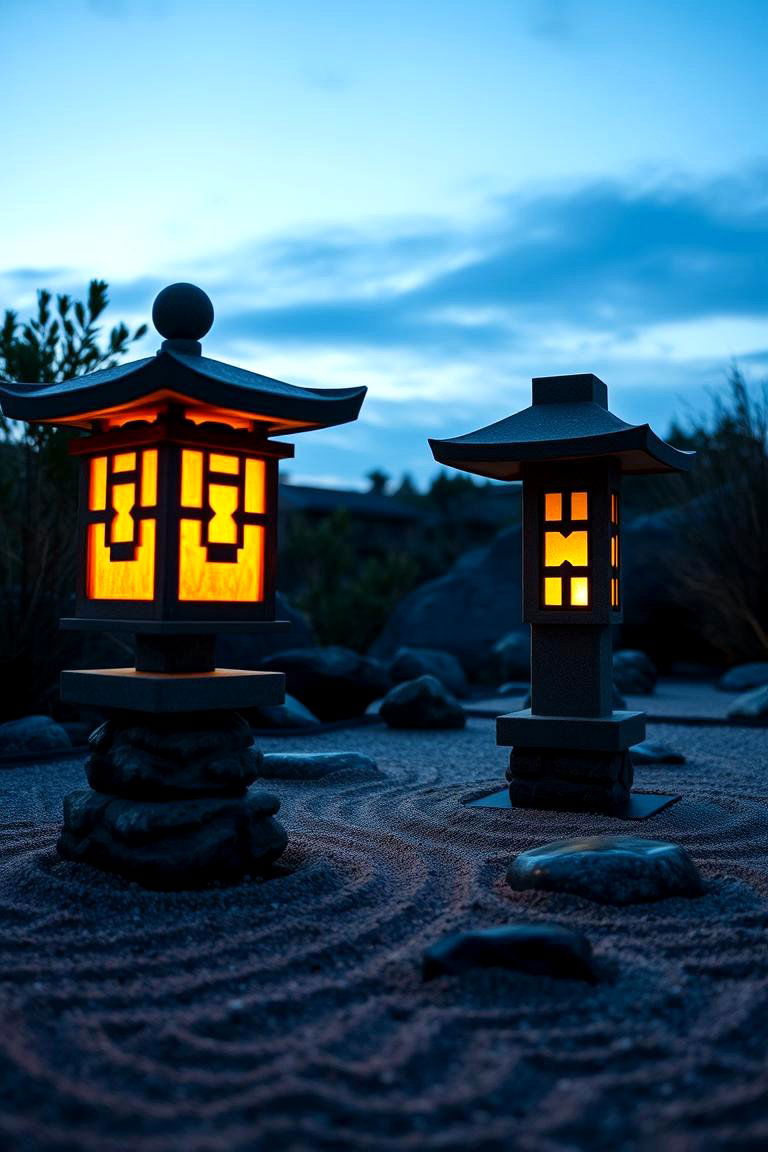
As dusk settles, a lantern-lit evening garden transforms into a magical space. Incorporating traditional Japanese lanterns adds a soft, warm glow, enhancing the ambiance and extending the enjoyment of your Zen garden into the night. The gentle light casts intriguing shadows, creating a serene and contemplative atmosphere. Consider solar-powered lanterns for an eco-friendly and low-maintenance option, allowing you to unwind in a peaceful and enchanting setting.
8. Stepping Stone Pathway
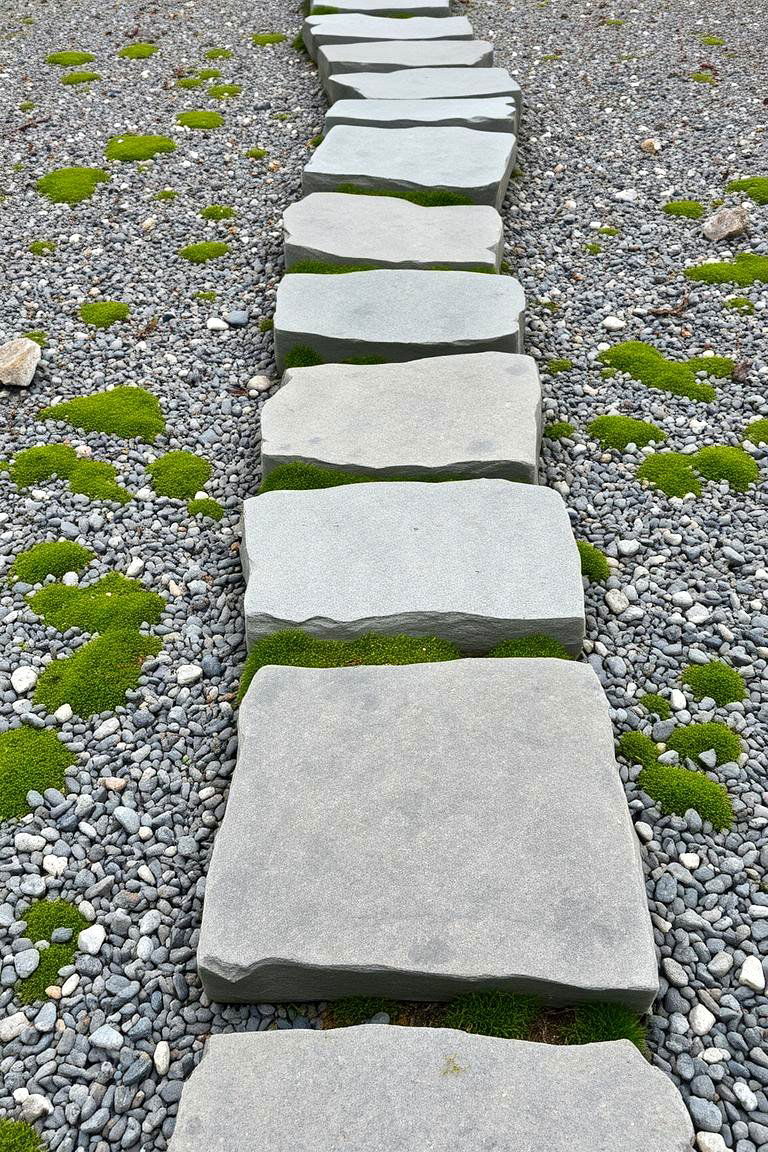
By introducing a stepping stone pathway, you can encourage mindful movement through your Zen garden. The deliberate placement of stones invites a slow and deliberate pace, allowing you to fully appreciate the surrounding elements. Use natural materials like flat rocks or weathered wood for the stepping stones. This feature adds a sense of journey and encourages a more intimate interaction with the garden's design.
9. Bonsai Tree Focal Point
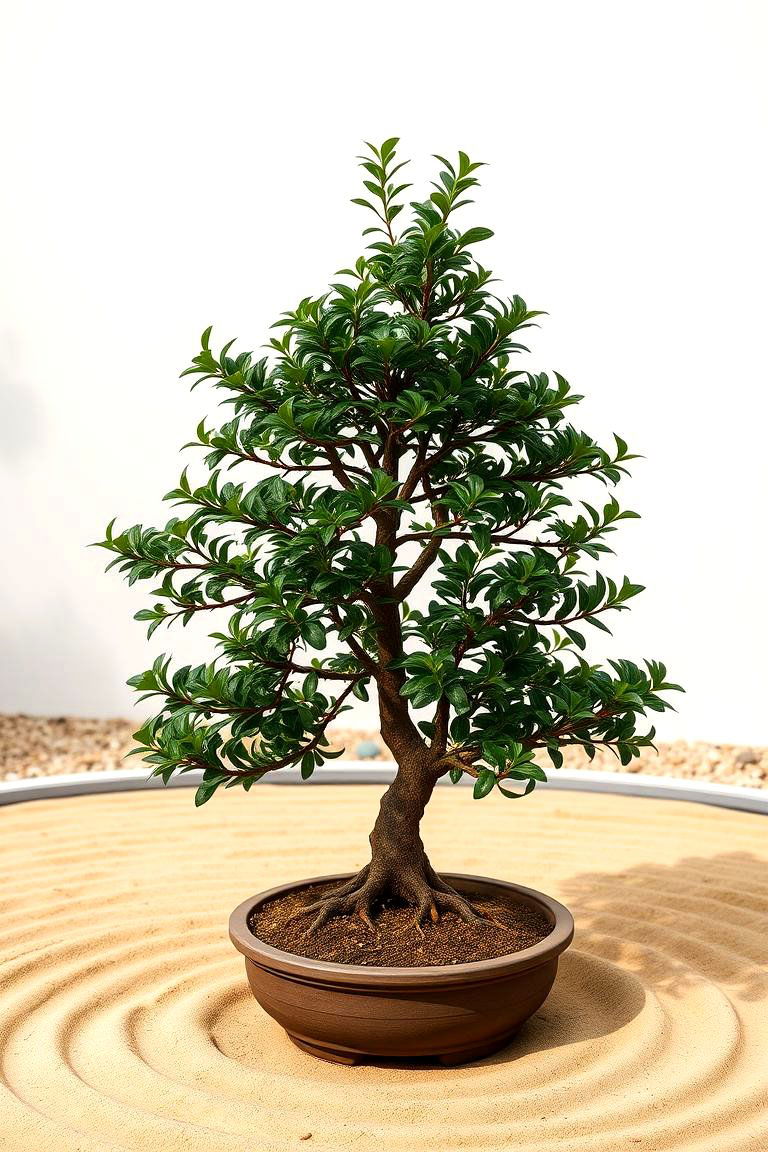
What about making a meticulously pruned bonsai tree the focal point of your Zen garden? The art of bonsai embodies patience, care, and a deep appreciation for nature's beauty in miniature. A well-chosen bonsai can add a touch of sophistication and visual interest to your garden design. Ensure the bonsai's placement complements the other elements, creating a harmonious and balanced composition that invites contemplation.
10. Gravel Garden with Island Rocks

The simplicity of a gravel garden punctuated by carefully placed island rocks offers a minimalist yet profound aesthetic. The expanse of gravel represents water, while the rocks symbolize islands or mountains emerging from the sea. The negative space created by this design is just as important as the elements themselves, fostering a sense of openness and tranquility. This style emphasizes the beauty of natural materials and the power of suggestion.
11. Zen Garden with Meditation Bench

For dedicated moments of reflection, consider incorporating a meditation bench into your Zen garden. A simple, comfortable bench placed in a serene corner can provide a dedicated space for mindfulness and contemplation. Choose a location that offers a sense of privacy and tranquility, allowing you to fully immerse yourself in your practice. This addition transforms your garden into a true sanctuary for inner peace.
12. Vertical Zen Garden

Bringing Zen principles to a vertical space, a vertical Zen garden is perfect for small balconies or patios. Using wall-mounted planters or tiered shelves, you can create a multi-layered display of moss, small succulents, or carefully arranged stones. This innovative approach allows you to enjoy the calming benefits of a Zen garden even with limited horizontal space, adding a touch of serenity to urban environments.
13. Natural Stone Arrangements

Another idea to explore is creating artistic arrangements of natural stones. Select stones of varying sizes, shapes, and textures and arrange them in aesthetically pleasing compositions. These arrangements can symbolize mountains, landscapes, or abstract concepts, inviting interpretation and contemplation. The focus is on the inherent beauty of the stones themselves and the balance achieved through their arrangement.
14. Zen Garden with Subtle Lighting
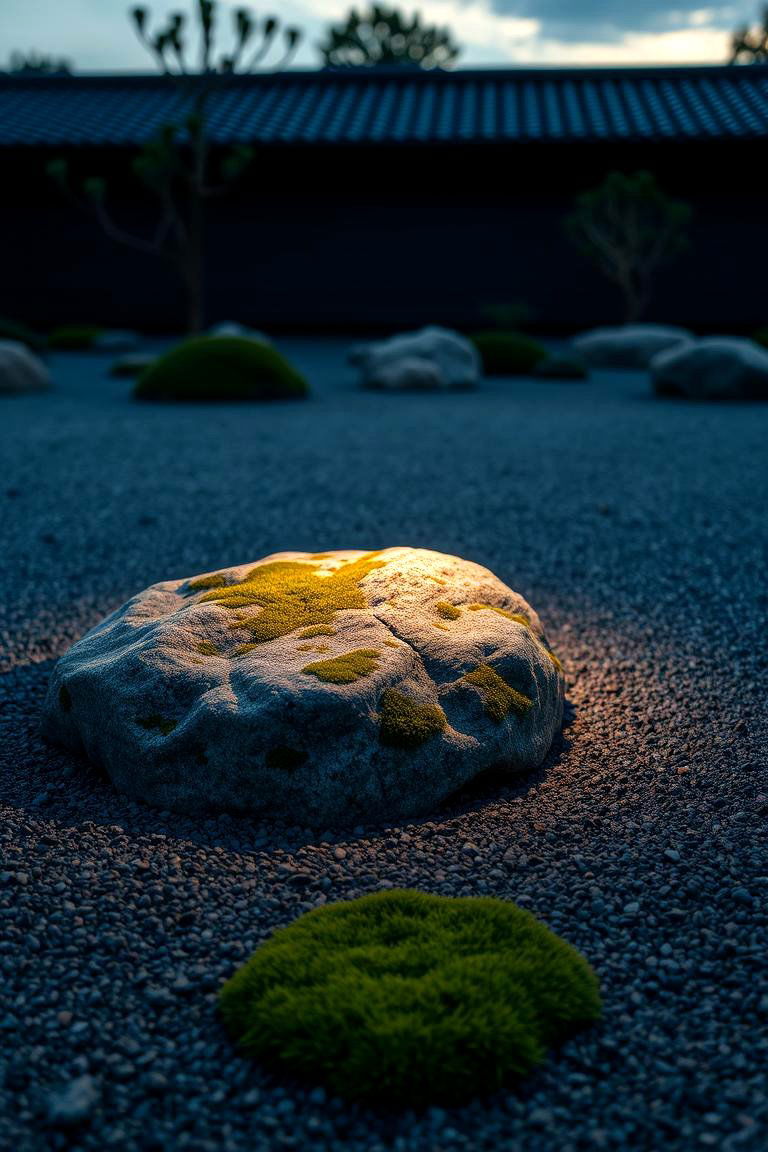
Subtle lighting can dramatically enhance the mood of your Zen garden, especially during the evening hours. Soft, strategically placed lights can highlight key features like rocks, plants, or water elements, creating a gentle and inviting ambiance. Consider using low-voltage or solar-powered lights to maintain a sense of tranquility and avoid harsh glare. This approach extends the enjoyment of your garden into the night, fostering a peaceful atmosphere.
15. Incorporating Evergreen Plants

By including evergreen plants in your Zen garden, you can ensure year-round visual interest and a sense of enduring tranquility. Choose plants with subtle textures and calming green hues, such as ferns, junipers, or dwarf pines. These plants provide a constant element of life and serenity, regardless of the season, contributing to the overall peacefulness of the space.
16. Using Natural Wood Elements

With the warmth and natural beauty of wood, incorporating wooden elements can enhance the organic feel of your Zen garden. Consider using weathered driftwood, bamboo stakes, or wooden benches to add texture and visual interest. The natural tones of wood complement the other elements in a Zen garden, creating a harmonious and inviting atmosphere that feels grounded and connected to nature.
17. Creating a Sand Wave Pattern

What about focusing on the art of creating intricate sand wave patterns? Using specialized rakes, you can design flowing curves, concentric circles, or straight lines in the sand or gravel. This practice not only adds visual appeal but also becomes a form of moving meditation, promoting focus and creativity. The ephemeral nature of the patterns encourages a sense of impermanence and mindfulness.
18. Zen Garden with a Bird Bath
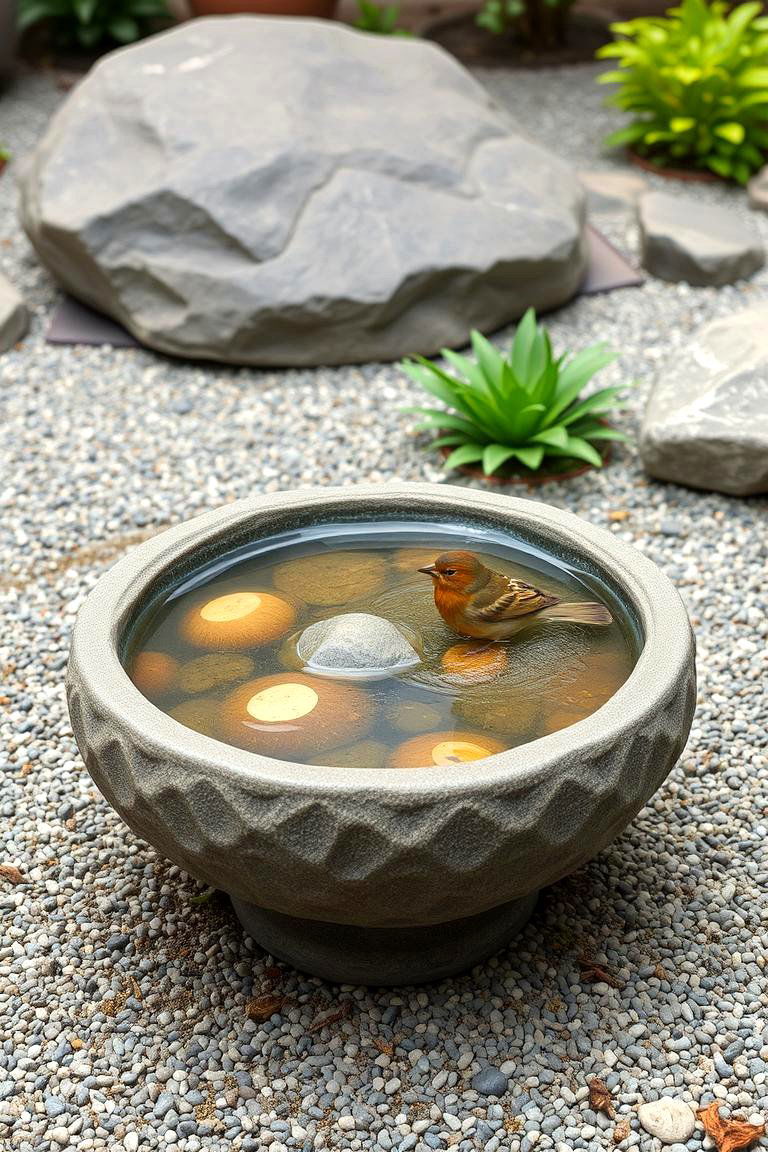
Bringing the gentle presence of nature closer, a Zen garden with a bird bath can add a touch of life and movement. The sight and sound of birds visiting the bath can enhance the tranquility of the space, connecting you with the natural world. Choose a bird bath made from natural materials like stone or ceramic to complement the garden's aesthetic.
19. Incorporating Symbolic Objects
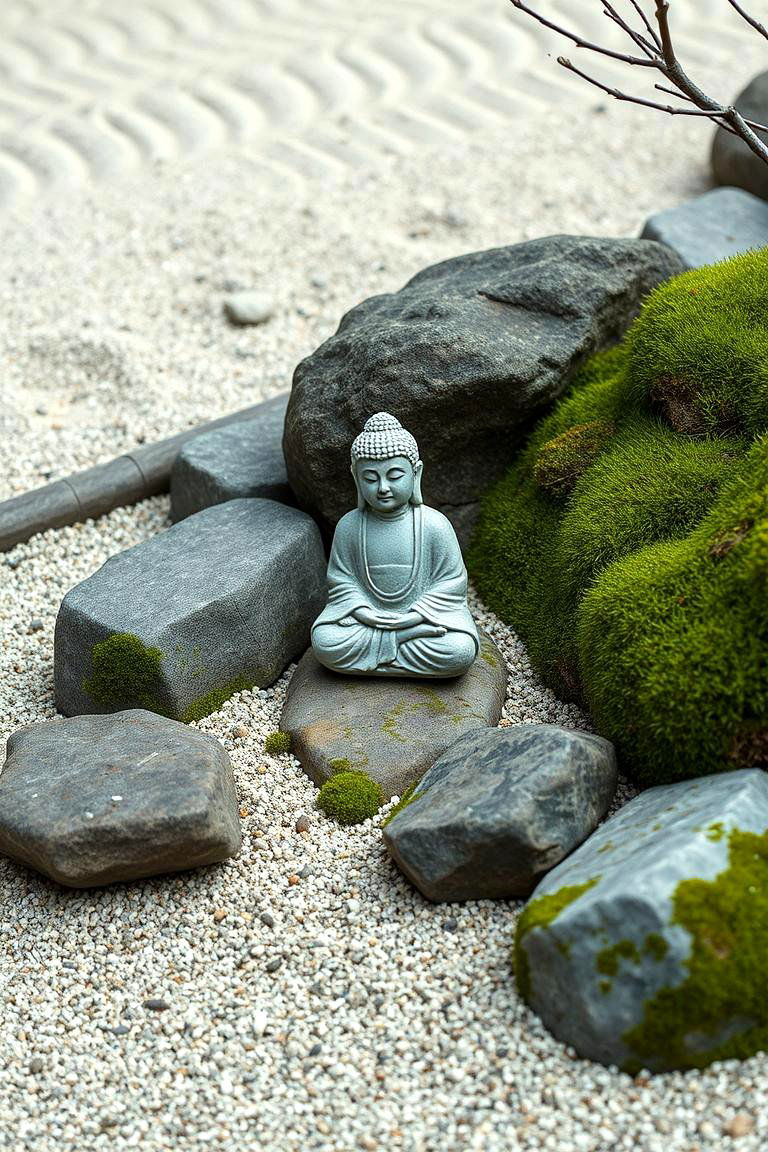
Consider adding symbolic objects to your Zen garden to enhance its meaning and personal significance. This could include a small Buddha statue, a carefully chosen stone with an interesting pattern, or any item that evokes a sense of peace and contemplation for you. These objects serve as gentle reminders of mindfulness and can deepen your connection with the garden.
20. Designing a Contemplative Corner
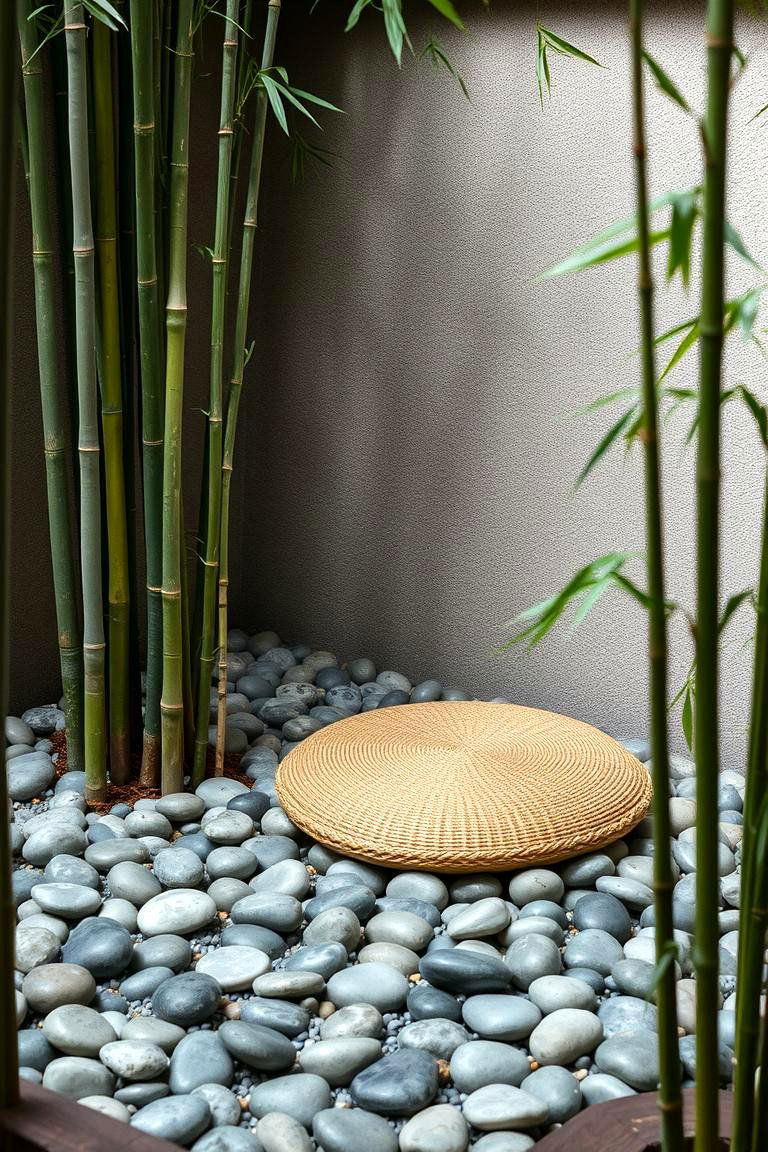
By designating a specific area as a contemplative corner, you can create a dedicated space for quiet reflection within your Zen garden. This could be a secluded spot with a comfortable cushion or a small bench, perhaps surrounded by calming elements like bamboo or soft moss. The purpose is to create an intentional space that encourages stillness and introspection.
21. Using Different Textures of Gravel

Another way to add visual interest is by using different textures of gravel or sand in your Zen garden. Combining fine sand with coarser pebbles can create subtle variations in the landscape, adding depth and dimension. Experiment with different sizes and colors to see how they interact with light and shadow, enhancing the overall aesthetic appeal and tactile experience.
22. Creating a Mini Zen Garden in a Bowl
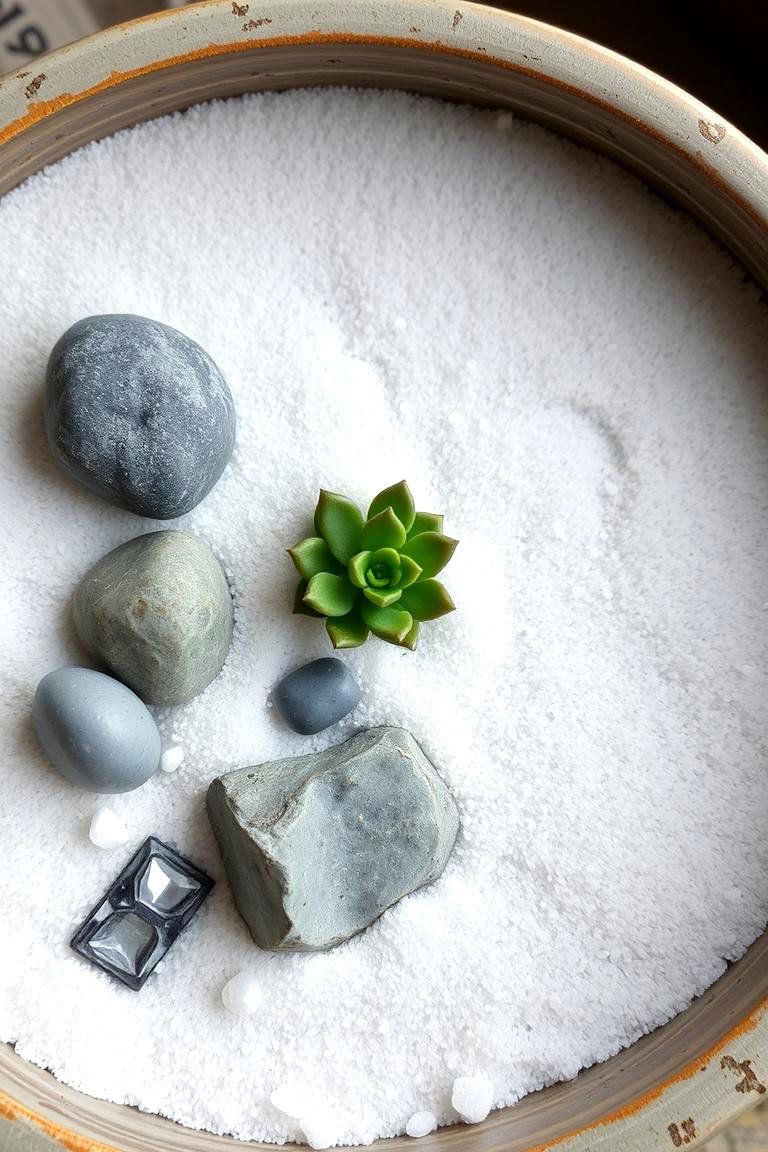
For an even smaller and more portable option, consider creating a mini Zen garden in a bowl. This involves layering sand or gravel, small rocks, and perhaps a tiny plant or figurine in a decorative bowl. It's a simple yet effective way to bring a touch of Zen into any space, offering a miniature landscape for mindful arrangement and contemplation.
23. Zen Garden with Water Dripping Feature

The subtle sound of gently dripping water can add a unique dimension to your Zen garden. A small water dripping feature, such as a bamboo spout or a carefully placed stone with water trickling down, creates a calming and peaceful ambiance. The rhythmic sound of the water promotes relaxation and a sense of tranquility, enhancing the overall sensory experience of the garden.
24. Personalizing Your Zen Garden
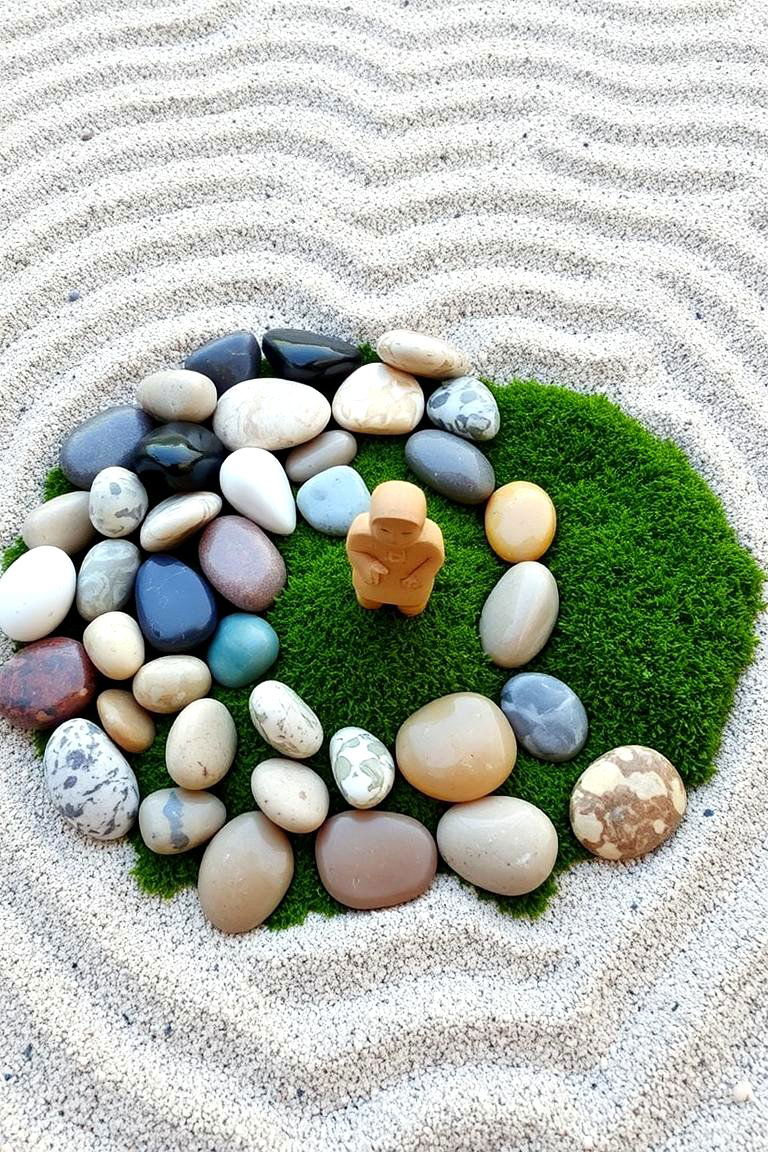
Finally, remember that the most important aspect of your Zen garden is that it resonates with you personally. Feel free to incorporate elements that hold special meaning or bring you a sense of peace and joy. Whether it's a particular type of stone, a favorite plant, or a unique arrangement, personalizing your Zen garden will make it a truly unique and meaningful sanctuary for your own contemplation and well-being.
Conclusion:
In essence, crafting a Zen garden is a journey of mindful creation, where simplicity and intention intertwine to cultivate spaces of tranquility. From the classic raked sand to the intimate tabletop versions, each of these 24 Zen garden ideas offers a unique pathway to serenity and a deeper connection with nature. By carefully considering elements like rocks, water, plants, and light, you can transform any area into a personal sanctuary that promotes peace, reflection, and a sense of well-being. Embrace the art of mindful arrangement and discover the profound calm that a thoughtfully designed Zen garden can bring to your life.


